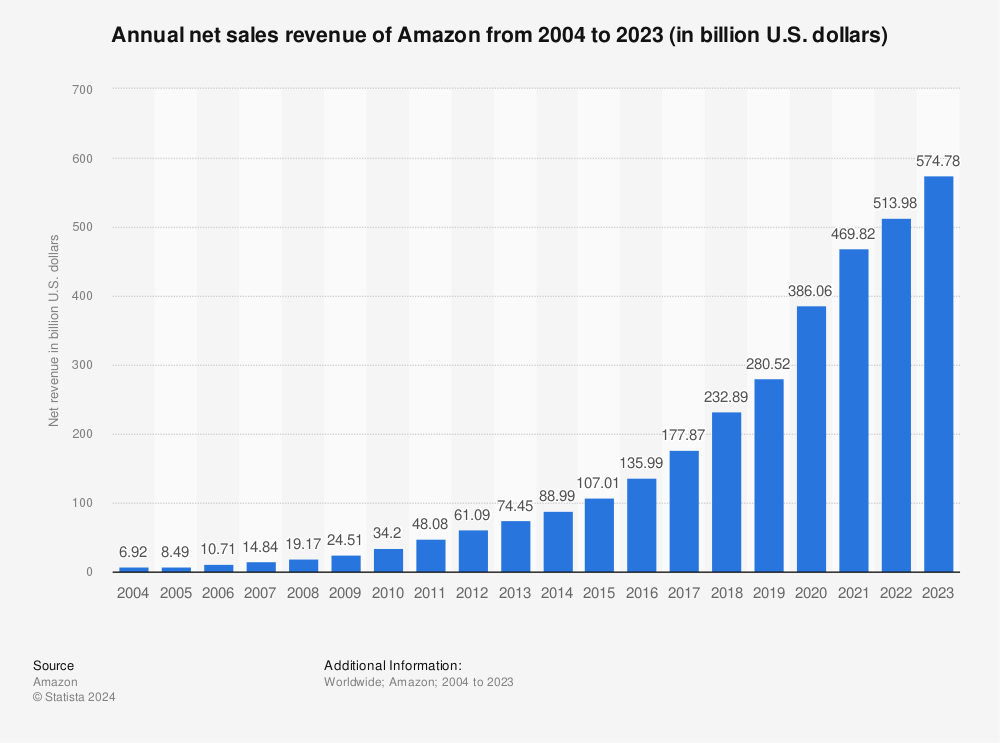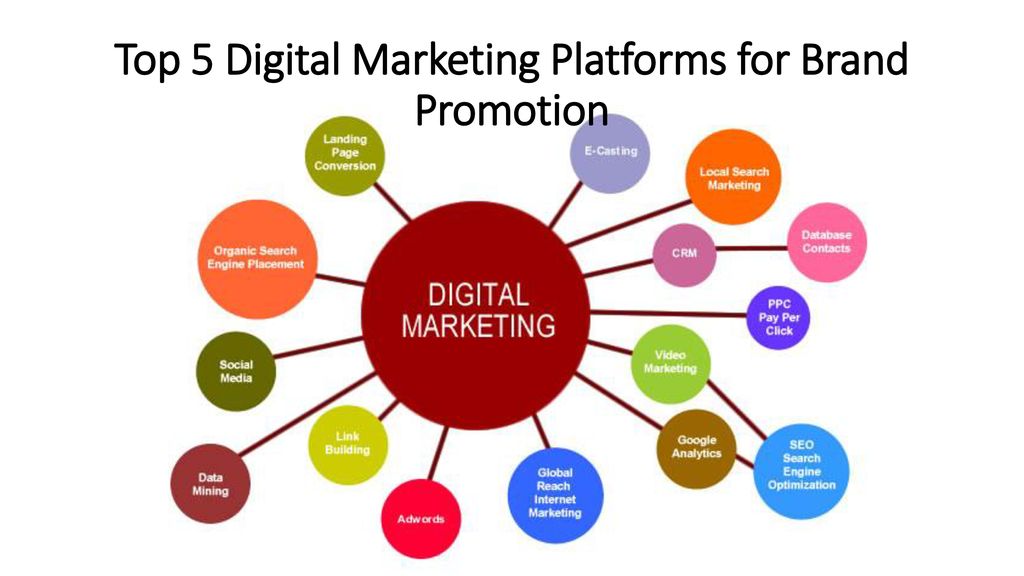How to Build an Online Marketplace – Utimate Guide
As per Statista, Amazon witnessed a substantial growth in net sales, reaching $469.8 billion in 2021, marking a 21.7% increase from the previous year. These impressive figures serve as inspiration for entrepreneurs aspiring to establish their own e-commerce platforms, with the potential to rival giants like Amazon or eBay. However, launching a marketplace website can be a daunting task, especially without a clear starting point. To simplify the process, we’ve outlined a series of steps to consider when venturing into the e-commerce business. This includes crucial stages such as selecting essential features, determining the development approach, and choosing a software consultancy to assist in building your platform. Additionally, the guide provides insights on enhancing and promoting your online marketplace website. Armed with this comprehensive information, you’ll gain the knowledge needed to create a marketplace that resonates with both buyers and sellers, fostering a positive user experience.

What is a marketplace, and what are their main types
A marketplace serves as a platform that showcases stores from different sellers. It acts as an intermediary that connects sellers with buyers of various goods and services, facilitating transactions between them. Presently, there is a notable trend in online sales shifting from individual online stores to marketplaces. This transition occurs because trading on marketplace websites offers numerous advantages compared to traditional online stores. Online marketplaces come in various types, differing in terms of products, interactions, and participants. Below is a table providing a general classification of marketplaces along with examples for better understanding.

Find more statistics at Statista
- B2B (Business-to-Business): These platforms provide services and products tailored for businesses. Wholesale dealers commonly use such online marketplaces.
- B2C (Business-to-Customer): This represents the classic model of global trade where online sales are directed at individual buyers. The Amazon marketplace platform operates on this system.
- C2C (Customer-to-Customer): Business transactions take place between private individuals, involving both monetary transactions and bartering. Examples of online marketplaces following this principle include eBay and Airbnb.
You may also like: Importance of Digital Marketing
Key benefits of building a marketplace website
Creating a marketplace offers various benefits for different stakeholders involved. Let’s explore the advantages for founders, buyers, and sellers:
Benefits for Founders:
- Revenue: The marketplace owner can choose from various revenue models such as listing fees, subscriptions, commissions, lead generation fees, and advertising.
- User Interest: The platform’s ability to bring together offerings from multiple vendors makes it attractive to buyers seeking a diverse range of options.
- Investor Interest: Marketplace website development has attracted significant investment from venture capitalists, showcasing its commercial viability.
Benefits for Buyers:
- Broad Range of Products: Online marketplaces provide buyers with a wide selection of products, offering everything they may need.
- Trusted Platform: Marketplaces inspire trust through ratings and reviews, making them more reliable than standalone firms.
- Promotions and Discounts: Buyers often enjoy various discounts on marketplace websites, attracting and retaining users.
- Convenience: The booking or purchase of items is just a click away, providing convenience to buyers.
Benefits for Sellers:
- No Need for Self-Promotion: Sellers on marketplace websites don’t need to invest in site development, support, or SEO. They can operate without hiring specialists like programmers or optimizers.
- Better Search Ranking: Marketplaces consistently rank high in search results, offering better visibility compared to standalone online stores.
- More Opportunities for Promotion and Clients: Sellers gain increased brand recognition and access to a larger customer base by being featured on marketplace websites.
- Access to Product Analytics: Sellers can access valuable statistics on product views, purchases, and more through their marketplace account.
In summary, creating a marketplace provides a lucrative platform for founders to generate revenue and attract investors. Buyers benefit from a diverse range of products, trusted platforms, promotions, and convenience. Sellers enjoy the advantages of not needing extensive self-promotion, better search rankings, increased promotional opportunities, and access to valuable product analytics.
Essential Steps to Create a Thriving online Marketplace
4. Select the Development Platform:
When creating an online marketplace, the choice between buying a ready-made solution and building a platform from scratch depends on factors such as budget, time constraints, and scalability plans. Custom software development offers tailored solutions to meet specific business needs, making it suitable for industries with unique requirements, such as education, healthcare, and finance. Advantages of custom development include:
- Meeting specific business requirements.
- Facilitating startup growth through flexibility.
- Avoiding unnecessary features and reducing development expenses.
Consider the custom development approach if your goal is to stand out from competitors and address specific business demands. Alternatively, ready-made software may be a suitable choice for those looking to save money at the initial development stage, when off-the-shelf solutions meet business requirements, or when a quick marketplace launch is a priority.
5. Choose the Best Tech Stack:
Selecting the right technology stack is a crucial stage in building an online marketplace, determining performance and reliability. Consider the following criteria:
- Scalability: Ensure the platform can handle increased user loads as it gains popularity.
- Flexibility: The tech stack should support user flows and easily accommodate the addition of new features.
- Security: Prioritize security measures to protect confidential user information.
At Codica, a software development company, the approach involves understanding the client’s business case and customer journey to choose a suitable technology stack. The stack should meet scalability, flexibility, and security requirements. The development team conducts thorough performance testing to ensure the platform’s ability to handle increased workloads. The technology stack should be flexible to support user flows and provide a great user experience. Security is a crucial factor, considering the handling of confidential user information.
Technology Stack Recommendations:
At getsocialguide, we have curated a list of tools for developing scalable, secure, and high-quality online marketplaces. The recommended tech stack and integrations ensure the success of your marketplace:
- [List of technologies and integrations]
Choose a technology stack that aligns with your marketplace goals and requirements for a successful development process.

Front-end Tech Stack:
The front-end of a web platform, which users interact with visually, demands a deep understanding of user needs. Our front-end tech stack for creating an online marketplace website includes:
- JavaScript
- TypeScript
- React
- Redux
- Next.js
- Vue.js
- HTML5
- CSS3
- Gatsby
Back-end Tech Stack:
The back-end, responsible for the internal functioning of a web solution, requires a solid foundation. For the back-end of a marketplace website, our experts utilize:
- Ruby on Rails
- Ruby
- Node.js
- Strapi
DevOps Tech Stack:
DevOps tools are crucial for continuous integration of operations, automating tasks, improving overall performance, and reducing the likelihood of manual errors. Our DevOps tech stack for creating a marketplace includes:
- Linux
- Ansible
- Docker
- Gitlab CI
- Terraform
Databases Tech Stack:
Databases play a significant role in the back-end ecosystem, handling the storage and processing of large amounts of data. Our chosen databases for building a marketplace are:
- PostgreSQL
- MySQL
- MongoDB
- Redis
- Firebase
- ElasticSearch
Infrastructure Software Stack:
For application deployment, provisioning, and configuration management, we prefer the following tools at Codica:
- AWS
- Digital Ocean
- Heroku
Integrations:
Integrations enhance system functionality, automating and completing various tasks. With the following integrations, we ensure the creation of a high-quality marketplace website:
- Stripe
- Google Analytics
- Paypal
- Mollie
- Hotjar
- Sentry
- MailChimp
- HubSpot
- Uptime Robot
- Skylight
Choosing a tech stack is a challenging process that requires careful discussion with stakeholders, thoughtful planning, and a development team with vast practical experience.
Choosing the right tech stack is crucial for the success of your platform. At Codica, our extensive expertise in marketplace software development allows us to recommend a technology stack that positively impacts business outcomes. The correct tech stack plays a significant role in creating an online marketplace and ensuring its success. As mentioned earlier, our experts utilize a specific tech stack to develop top-quality web solutions.
For instance, we are proud to showcase our work on the first automotive marketplace in Africa. The client required the development of a complex marketplace website covering multiple South American and African regions, connecting buyers with auto dealers and private sellers. Our choice of a proven tech stack, with Ruby on Rails as the core technology, resulted in a high-quality web solution featuring fast loading times, a straightforward workflow, and mobile optimization.
If you have any questions about implementing your idea, we’ll be glad to assist you.

6. Select a business model
To ensure your marketplace website generates a stable profit, it’s essential to choose a suitable revenue model. The selected model should offer favorable conditions for potential vendors while contributing to the growth of your marketplace. Let’s delve into some of the best monetization strategies employed by e-commerce giants like Amazon and eBay:
- Commission:
Cuts a percentage of each transaction made through your platform.
- Listing Fee:
Charges vendors a sum when they publish their items on the marketplace. The fee may increase with the higher cost of the product or service.
- Subscription Fee:
Sellers pay a charge to gain access to your e-commerce platform, usually through monthly or yearly fees, offering a defined set of benefits.
- Advertising Fee:
Involves promoting items on your marketplace by third-party advertisers.
- Lead Fees:
Users pay for access to detailed information about a desired item.
- Premium Membership:
Provides users with access to extra features and exclusive content.
In conclusion, selecting the right revenue models is crucial for ensuring profitability on your platform. You can start with a single monetization strategy and progress to more complex models, ultimately benefiting both your platform and vendors.
7. Write a business plan for the marketplace launch
Now it’s time to create a business plan, a crucial step before embarking on online marketplace development. Several reasons make this document essential for a successful marketplace launch. Firstly, a business plan serves as a vital tool for outlining your overall goals, enabling you to track progress as your e-commerce platform grows. Secondly, it reduces risks and helps prevent significant mistakes by foreseeing potential issues before they arise. Lastly, a business plan is indispensable when seeking third-party investors for your marketplace launch. To attract investment, you need to demonstrate the long-term viability of your marketplace idea.
Your multi-vendor marketplace development business plan should include:
- Review of Your Enterprise:
Provide an overview of your business as a whole.
- Marketplace Description:
Clearly articulate your marketplace’s goals and objectives.
- Products and Services:
Describe the products and services offered by your vendors.
- Target Audience and Niche:
Provide information about your target audience, the chosen niche, and your competitors.
- Online Marketplace Strategy:
Outline your strategy and the methods for its implementation.
- Organizational Structure:
Detail your team’s organizational structure.
- Financial Plan:
Include a revenue model and projections in your financial plan.
With this comprehensive document, you’ll be well-prepared to discuss essential questions, such as financial projections and exit strategies, with potential investors for your marketplace.
8. Find a Reliable Co-founder:
While you can run your online marketplace business solo, having a reliable co-founder can offer numerous advantages. Investors often trust companies with multiple founders, increasing your chances of securing funding. A co-founder can provide valuable assistance in decision-making, share responsibilities, and alleviate stress related to the e-commerce business. Their expertise can complement yours, contributing to a more well-rounded team. Prioritize finding a co-founder with a suitable educational background, experience, and proven capacities to ensure a successful partnership.
9. Search for Compatible Investors:
Funding is crucial for turning your online marketplace idea into reality. If you lack sufficient funds, seek external investors. Attend events, conferences, and meetings to connect with investors interested in your type of business. Online platforms like AngelList and Crunchbase can also help you find compatible investors. Look beyond financial support; investors can offer valuable advice and strategic insights, accelerating your marketplace launch and fostering project growth.
10. Define the Required Budget:
Building a marketplace from scratch is a substantial investment, and the cost depends on various factors. Custom development offers scalability, reliability, and customization but comes at a higher price compared to off-the-shelf solutions. The project’s complexity, features, and chosen technologies determine the budget. Consider hourly rates, with rates in Eastern European countries being lower than in the USA. For example, a US web developer may charge around $100 per hour, while a Ukrainian developer’s rate might range from $35 to $60 per hour. Taking these rates into account, developing a website like Amazon could cost a minimum of $78,300, and a rental marketplace like Airbnb might cost about $77,500.
The budget isn’t limited to technical implementation; resources are needed for ongoing project growth. Choose the right development approach and conduct testing and user feedback collection to adjust and improve your web project continually. It’s crucial to have experienced software developers for this endurance race of marketplace development.
For more detailed information on marketplace development costs, refer to our comprehensive article: “How Much Does it Cost to Build an Online Marketplace in 2022.”
11. Select the right development team
Partnering with the right development firm is crucial for a successful marketplace launch. Follow these tips to responsibly select software developers for building your online marketplace:
Research and Ratings:
- Explore research and rating platforms like Clutch, GoodFirms, and Appfutura
- These platforms offer detailed information about development teams, including client reviews.
Client References:
- Check references from the developers’ clients. Understanding their past clients’ experiences provides valuable insights into the team’s capabilities and reliability.
Marketplace Value:
- Ensure that the chosen team understands how to build a marketplace that adds value for both buyers and sellers. Look for a development partner with a track record of creating successful and user-friendly online marketplaces.
Development Process and Technology:
- Pay attention to the organization of the development process and the technologies applied. For instance, at Codica, we use Ruby on Rails to build reliable and fast-loading marketplaces.
Agile Methodology:
- Give preference to companies that adopt the agile methodology. Agile allows for flexibility and quick responses to market demands, minimizing the risk of costly market misses.
Portfolio Review:
- Examine the software company’s portfolio to ensure they have experience creating user-friendly online marketplaces. A robust portfolio is indicative of their capability to deliver high-quality solutions.
- Starting a new project is a challenging process, and selecting an established team familiar with building top-quality online marketplaces can make it easier. Choose a team that can deliver a fast, scalable, and user-friendly web solution for your marketplace.
12. Develop an MVP first
Building a Minimum Viable Product (MVP) for Your Marketplace:
Building a minimum viable product is the most efficient way to save money, time, and effort when creating a marketplace. Here are the main reasons why starting with MVP development is recommended:
Quick Release:
- An MVP allows you to launch your marketplace idea in the shortest possible time, enabling you to enter the market swiftly.
Cost Savings:
- By starting with an MVP, you can save significantly on costs. The approach involves verifying your idea before investing in a full-featured platform, ensuring it resonates with potential customers.
Finding Early Adopters:
- An MVP helps identify early adopters who provide valuable feedback on how to make your marketplace attractive. Their insights guide you in adding, modifying, or removing features based on user preferences.
Focus on Basic Features:
- MVP development focuses on essential features needed for a marketplace launch. Additional functionalities can be incorporated as the platform scales. Perfection is not the primary goal initially, as evidenced by the absence of Wi-Fi in the first iPhone project.
MVP Prioritization Matrix:
Utilize tools like the MVP prioritization matrix, as offered by Clearbridge Mobile, to determine the features to include in the MVP. This chart helps prioritize features based on their importance.
In summary, building an MVP is about testing your business idea, engaging early adopters, and meeting their initial needs with key features. Valuable feedback obtained from users guides the continuous improvement of your product. Codica, as a reliable MVP software development company, has extensive experience assisting startups in launching and growing their products. For example, we worked on an MVP project for an online booking platform, connecting busy parents with kids’ program providers. Starting with an MVP allowed our client to validate the business idea with minimal effort and investment. Success in building a marketplace depends on well-defined MVP features, and our development team at Codica is here to help you make informed decisions through in-depth project analysis.
13. Acquire users
14. Platform promotion

Promoting Your Marketplace Platform with SEO and Content Strategy:
Effectively promoting a marketplace platform requires a dedicated team of experienced SEO professionals and content experts. The collaboration between these two roles is crucial for identifying growth opportunities, optimizing technical aspects, and creating high-quality content. To ensure efficiency in your approach, follow this algorithm:
Search and Development of Potential Traffic Pages:
- Conduct thorough research to identify potential traffic pages on your marketplace platform. These pages should align with the interests and needs of your target audience. Work on developing content that addresses these specific areas.
Technical Optimization of the Marketplace:
- Implement technical optimizations on your marketplace platform to enhance its search engine performance. This includes optimizing site speed, ensuring mobile responsiveness, and addressing any technical issues that may affect SEO.
Identification of Competitors and Refinement of the Semantic Core:
- Identify key competitors in your niche and refine your semantic core accordingly. Understand the keywords and phrases that are relevant to your marketplace, ensuring your content aligns with user search intent.
Analysis and Compilation of Metadata:
- Conduct a comprehensive analysis of metadata for all pages on your platform. Ensure that meta titles, descriptions, and other metadata elements are optimized for search engines and provide clear, concise information to users.
Compilation of Technical Requirements to Content:
- Work closely with content managers to compile technical requirements for the content they create. This includes guidelines for keyword usage, formatting, and ensuring alignment with SEO best practices.
Drawing Up a Link Promotion Strategy:
- Develop a robust link promotion strategy to enhance the authority and credibility of your marketplace platform. Build high-quality backlinks through outreach, collaborations, and partnerships with relevant websites in your industry.
Analysis of Promotion Results and Optimization of Workflow:
- Regularly analyze the results of your promotion efforts. Evaluate key performance indicators (KPIs) such as organic traffic, keyword rankings, and conversion rates. Optimize your workflow based on these insights, making data-driven decisions for continuous improvement.
By following this algorithm, you can create a well-rounded SEO and content strategy that maximizes the visibility and reach of your marketplace platform, attracting both buyers and sellers.
15. Build trust between sellers and buyers
16. Essential Tools for Smooth Marketplace Business Operations:
17. Ensuring Legal Protection for Your Marketplace Business:
Summary
We trust that this comprehensive guide has addressed the key question: how to create a marketplace that caters to the needs of both buyers and sellers. By defining the necessary functionality, selecting a trustworthy custom software development company, and adopting the right methodology, you pave the way for marketplace success. As the Chinese proverb wisely states, “A journey of a thousand miles begins with a single step.” You now possess the potential to establish an online marketplace akin to Airbnb or Etsy. If you seek a reliable software consultancy to assist you with online marketplace development, we are ready to turn your ideas into reality. Feel free to contact us to discuss your project and receive a free quote.



